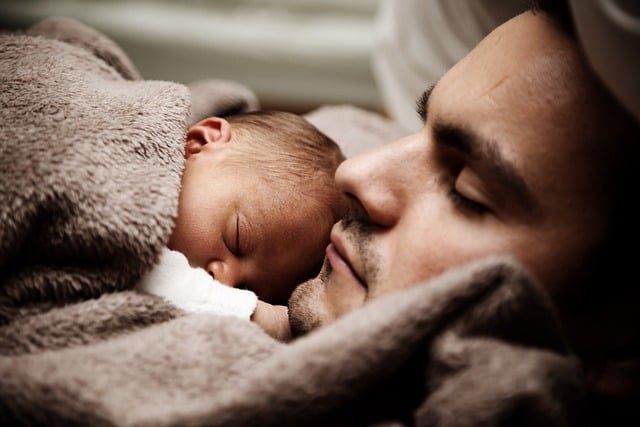Child welfare legal services in Oregon focus on balancing parental rights protection and the well-being of children involved in DHS child welfare cases. Lane County child advocacy groups play a crucial role by offering support and resources to families through family therapy and case management guided by Oregon's Child Protective Services Law. This collaborative approach ensures fair treatment for parents while prioritizing child safety, aiming to reunite families whenever possible within the legal framework of Oregon family law.
“Exploring Legal Aspects of Child Welfare: A Comprehensive Guide is your trusted companion in understanding the intricate world of child protection laws. This article delves into crucial topics such as Child Welfare Legal Services, offering an overview of vital protections for vulnerable children. We examine Parental Rights Protection, highlighting the delicate balance between safety and family preservation. Additionally, we explore DHS Child Welfare Cases, procedures, and the pivotal role of organizations like Lane County Child Advocacy. Oregon Family Law and its interaction with Child Protective Services are also dissected, emphasizing legal responsibilities in this critical domain.”
- Understanding Child Welfare Legal Services: An Overview of Key Protections
- Parental Rights Protection: Balancing Safety and Family Preservations
- DHS Child Welfare Cases: Procedures and The Role of Child Advocacy Organizations
- Oregon Family Law and Child Protective Services: Navigating Legal Responsibilities
Understanding Child Welfare Legal Services: An Overview of Key Protections

Child welfare legal services play a pivotal role in safeguarding the rights and well-being of children involved in DHS child welfare cases. These services are designed to provide comprehensive legal protection for both children and their families, especially when navigating Lane County child advocacy or Oregon family law. Key protections include ensuring parental rights are upheld while also offering support to help families meet the necessary standards for child safety and stability.
In Oregon, the child protective services law outlines clear guidelines for removal, placement, and case management, with a strong emphasis on preserving familial connections whenever possible. Legal advocates work diligently in DHS child welfare cases to ensure that all parties understand their rights, obligations, and available resources. This holistic approach, often facilitated by organizations like Lane County child advocacy groups, aims to foster a safe and nurturing environment while respecting the intricate dynamics of family relationships.
Parental Rights Protection: Balancing Safety and Family Preservations

In the realm of child welfare legal services, balancing the safety and preservation of families is a delicate act. Parental rights protection is a cornerstone of Oregon family law, ensuring parents are treated fairly while also safeguarding the well-being of children involved in DHS child welfare cases. Lane County child advocacy plays a crucial role in this balance by providing resources and support to both parents and children, aiming to keep families together whenever possible.
The Child Protective Services Law outlines procedures that must be followed when a child’s safety is at risk. These laws are designed to preserve family ties while also ensuring the child’s protection. In many cases, particularly those handled by Lane County child advocacy, intervention strategies focus on family therapy and support services to resolve issues that led to the child welfare case, ultimately aiming to reunite families if possible.
DHS Child Welfare Cases: Procedures and The Role of Child Advocacy Organizations

In DHS Child Welfare Cases, procedures are stringent and designed to protect both children and parental rights. The Department of Human Services (DHS) plays a pivotal role in ensuring the safety, well-being, and stability of vulnerable youth through its Child Protective Services (CPS). These cases often involve complex legal landscapes, requiring skilled professionals to navigate Oregon family law. When a child is alleged to be abused or neglected, CPS workers swiftly intervene, conducting thorough investigations and making informed decisions based on evidence and best interests of the child.
Lane County child advocacy organizations collaborate closely with DHS to offer specialized legal services and support. These groups focus on advocating for both children and parents, ensuring their rights are protected throughout the process. By providing dedicated child welfare legal services, they aid in resolving cases efficiently while promoting positive outcomes for all involved parties. This collaborative approach underscores the commitment to upholding justice and safeguarding the future of Oregon’s young people.
Oregon Family Law and Child Protective Services: Navigating Legal Responsibilities

Oregon’s Family Law and Child Protective Services (CPS) operate within a robust legal framework designed to safeguard the welfare of children. When it comes to child welfare legal services, the state prioritizes the protection of minors, ensuring their safety and well-being. In DHS child welfare cases, the involvement of CPS is triggered by reports of abuse, neglect, or abandonment, necessitating legal intervention to protect the child. Lane County, for instance, boasts dedicated child advocacy programs that collaborate closely with local law enforcement and social services to navigate complex Oregon family law issues surrounding vulnerable youth.
The rights of parents are also carefully considered under these laws. Parental rights protection is a cornerstone of the system, balancing intervention with due process. In CPS cases, parents face legal challenges aimed at addressing harm while preserving their relationship with their child. The interplay between these legal responsibilities requires a nuanced understanding of child protective services law, ensuring that both the best interests of the child and the parental rights are respected throughout the process.






